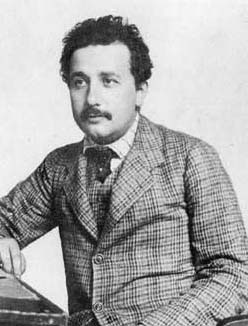i wrote this essay for the 2009 AFSA (American Foreign service association ) high school essay contest which offers a scholarship for the winner. unfortunately i was not selected amongst the happy winners, but at least i believe that I’ve broadened my view of the world by deeply exploring the one of the greatest menace facing mankind.
the essay topic can be found
here at AFSA’s website .
TOPIC :Analyze and explain what you think will be the Challenges Facing the American Foreign Service in the 21st Century
your comments will be greatly appreciated.
———————————————————————————————————–

Terrorism and proliferation of nuclear weapons are the two major challenges facing the U.S national security and the world peace and stability. The attempt of Iran to obtain a nuclear weapon in a region characterized by instability and extreme violence committed by terrorist groups such as al-Qaida, Hezbollah and the Lashkar-e-Omar (LeO) supported and financed by Iran, represent a colossal danger for the middle east, the U.S and the world.
Since the Iranian Islamic revolution of 1979 which transformed the country from a constitutional monarchy to an Islamic republic, Iran has been the leading sponsor of terrorism in the Middle East. In fact on November 4, 1979, just after the revolution, “students affiliated with the Iranian revolution group occupied the U.S embassy in Tehran and held fifty tree U.S diplomats hostage for 444 days” (Farber). It is also well known that the Iranian government is a great sponsor of global and regional terrorist organizations. Iran supported and financed the Hezbollah during the Israeli-Lebanon war in 2006, the Hamas and the Palestinian Islamic jihad group in the 2008-2009 Israeli-Gaza conflict. And there is “overwhelming evidence” said Michael McConnell, that Iran Sponsored the insurgency of terrorist groups in Iraq, supplied arms to the Taliban and hosted Al-Qaida terrorists who committed the attack of September 11, 2001. All those facts demonstrated that Iran is a treat to the U.S and to the world. Furthermore, the radical Iranian president Mahmoud Ahmadinejad unmasked his desire to “wipe Israel of the map” and denied holocaust (IRB News).
Over the past several years, Iran’s nuclear activities have commanded the attention of the United State and the International Community suspecting it of developing nuclear weapons. The United Nations called on Iran to renounce its uranium enrichment but Iran denied the call.0n March 2007. U.N Security Council agreed unanimously to sanction Iran imposing ban arms sales and expanding the freeze on assets, in response to the country uranium activities.
Recently, other national and international agencies led investigations on Iran nuclear program and concluded that Iran will be capable to produce a nuclear weapon if it continues its uranium enrichment. For example, In its May 2007 assessment, the United States national intelligence estimate (NIE) judged “Iran probably would be technically capable of producing enough HEU (highly enriched uranium) for a weapon sometime during the 2010-2015 time frame” and urged Iran to stop its nuclear activities . Further, Mohamed Elbaradei, the director of IAEA (international atomic energy agency), asserted on 24, October 2007 that Iran could take between 3 and 8 years to make a bomb if it went down that route.
On the other hand, Elbaradei and other intelligence agencies acknowledge that there is not sufficient proof to assume that the Iranian republic is developing a nuclear weapon. “Maybe some studies about possible weaponnization” but “no evidence” of “nuclear material that can readily be used into a weapon” or “”an active weaponnization program” Elbaradei stated. Iran itself states that it is conducting “peaceful” nuclear programs “.but the U.S claims that Iran ended atomic arms work.
It is clear that the United States and the world can not and should not let Iran obtain nuclear weapons for, Iran, by its support and finance of terrorist organizations and by menacing Israel of destruction has proven to the world that its acquisition of mass destructive weapons will be equivalent to terrorists’ possession of mass destructive weapons and a direct menace against the world, the U.S and its allies.
Facing those menaces from Iran and the growing influence of terrorism, the United State Foreign Services has supported democratic nations in the Middle East, collaborated with the United Nations and it has successfully created strategic alliances with others nations including Islamic nations in order to contain the pandemic spread of terrorism and afflict more intense international sanctions against Iran which perhaps will lead it to negotiate or even abandon its nuclear ambitions.
Personally, I believe that to combat terrorism, the United States Foreign Service must primarily support president Obama’s removal plan of the U.S troops from Iraq; because “U.S efforts to fight terrorism with an expanded military presence in Muslim countries appear to have elicited a backlash and to have bred some sympathy for al Qaeda, even as most (Muslims) reject its terrorist methods” (kull). The U.S Foreign Service must Lead campaign in the Muslim world because, I believe, the Combat against terrorism can only be possible by leading campaigns to explain to the Arab-Muslim world in particular and to the Muslim world in general that the United States is not an enemy nor is it an imperialist power which searches to occupier their lands but, in contrary that the united states is a friend which is committed to restoring peace , stability and prosperity in the region and that in order to restore regional peace and stability for our common benefit, the United States needs their support and cooperation in order to defy terrorist organizations which promote violence, hatred and falsely use the name of religion to justify their monstrous acts and to protect their own interest. This view is supported by most Middle East experts and most moderates Islamic scholars such as Aida Akl.
Finally, the United State Foreign Services must financially help improve the live of the people living in the Middle East by building schools, streets, and offices and by providing better basic daily life necessities which are water, foods and habiliments. The creation of schools is, I believe, one of the most effective ways to combat terrorism and terrorists’ ideologies. schools educate the rising generation and teach it the value peace and will prevent further expansion of terrorism.
In conclusion, Iran and terrorism represents the biggest challenges for the U.S, the world, and the U.S must employ every mean possible to permanently halt Iran’s nuclear activities and the terrorist group which it support.
Works Cited
1. Levitt, Mathew & Jacobson, Michael “Timely Reminder of Support of Iranian support for Terrorism.” The Washington Institute for near east policy (February 22, 2008): .
2. David, Farber. Taken Hostage: The Iran Hostage Crisis and America’s First Encounter with Radical Islam. Princeton University Press, 2005.
3.
Cfr.org. “McConnell Cites ‘Overwhelming Evidence’ of Iran’s Support for Iraqi Insurgents.” Council on Foreign Relations (June 28, 2007) :<>.
4.
IRIB News. “Ahmadinejad: Israel must be wiped off the map.” Islamic Republic of Iran broadcasting (2005/10/26) :
5. UN. “Security Council tightens sanctions against Iran over uranium enrichment.” UN News Center:
6. N IE. “Iran: Nuclear Intentions and capabilities.” National Intelligence Estimate (November 2007): <>.
7. Herald Tribune. “UN nuclear watchdog chief expresses concern about anti-Iran rhetoric from US.” International herald tribune, the global of the New York Times (October 28, 2007): http://www.iht.com/articles/ap/2007/10/28/america/NA-GEN-US-Iran.php
8. AFP. “Six powers to meet soon over Iran’s nuclear program: US.” AFP (Jan 15, 2008):
<>.
9. World Public Opion.org. “Muslim Publics Oppose Al Qaeda’s Terrorism, But Agree With Its Goal of Driving US Forces Out.” World Public Opinion (February 24, 2009)
10. Msnbc. “Study: U.S. must work with Muslim communities to fight terrorism.” msnbc (Feb. 26, 2009) :<>
11. Akl, Aida. “U.S. Muslims Eager to Help Fight Terrorism.” Muslim public affair council (October 31, 2005): < id="88">.


























